Overhead Crane Cable: Imagine the following situation: An inspector has examined the hoist rope and he has found 10,000 wire breaks. He insists that the rope is still in good working condition. Could this be true?
Before wire ropes were invented in 1834, chains were the most common lifting means. They have, however, one inherent disadvantage: Chains are linear arrangements of load-bearing elements. If only one chain link fails, the whole system will fail.
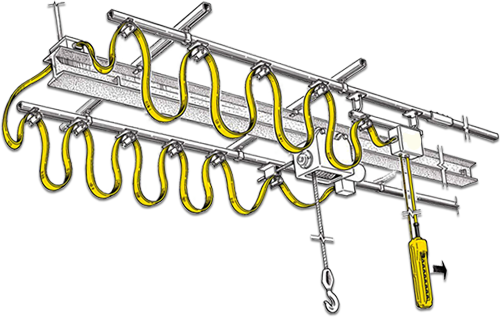
Crane wire rope specification
Steel wire ropes, Overhead Crane Cable, on the other hand, are parallel arrangements of load-bearing elements. If one rope element fails, the breaking strength of the wire rope is reduced only locally, and usually by less than 1%.
Wire ropes are multiple redundant systems of load-bearing elements. In a redundant system, every element which is necessary for the proper functioning of the system exists at least twice. For example, some of the parts of our human body are redundant: If we lose sight in one eye, we can still see. And if we lose the hearing in one ear, we can still hear. If in a wire rope one wire fails, there are still about 250 other wires to carry the load.
But what will happen if during the service life of the rope more and more of these wires fail? If we have lost the sight in both eyes, we can no longer see. And if we have lost the hearing in both ears, we can no longer hear. Therefore, should not also the wire rope fail if every single one of its 250 wires is broken?
No. It sounds incredible, but a wire rope can still be in good condition even if every single one of its wires is broken 200 times!

Wire rope hoist crane
The figure shows a schematic arrangement of the 250 wires making up a wire rope (for space reasons, only 30 wires are displayed). Along the rope length, every single one of the 250 wires is broken once. Each wire break, however, merely represents a local reduction of the rope’s breaking strength. A few millimeters away from the location of the break the broken wire will again bear its full share of the load.
Overhead Crane Cable:
If we have a very uniform distribution of the wire breaks along the rope length so that in every short piece of rope only one wire break can be found, the breaking strength of every single one of these sections is weakened by less than one percent only. In a pull test, this wire rope might achieve its full catalog breaking strength even though every single one of its elements is broken! Still, there must be rules about how many broken wires per rope unit length that can be tolerated.
The discard number of wire breaks is defined in the applicable national or international standards and in the rules of the classification societies as a permissible number of wire breaks per multiple of the wire rope diameter, e.g. per 6 x rope diameter (one rope lay length) or per 30 x rope diameter (5 rope lay lengths). Our inspector has found 10,000 wire breaks, but the discard number was not reached in any single rope section of a length of 6 x d or 30 x d. So he was perfectly right in his decision to keep the rope in service. This example shows that under normal conditions a wire rope is a very safe and reliable machine element.
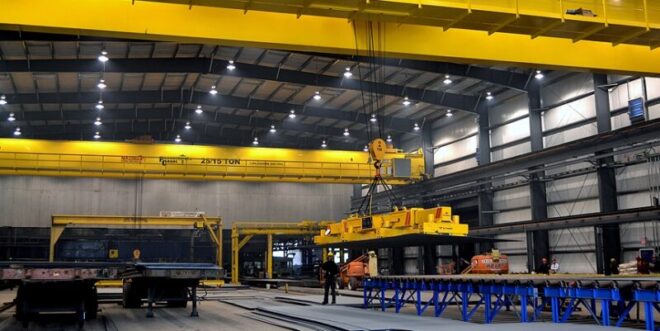
Installing wire rope on crane
Choosing a crane wire rope: Overhead Crane Cable
Items to be taken into account when choosing a wire rope:
Breaking strength
The workload that the wire rope is to be subjected to is the first item to be taken into account when choosing a wire rope. Depending on the workload and the safety factor we wish to apply, we will have the wire rope breaking strength.
Corrosion resistance
If the wire rope is to be used in corrosive environments, a wire rope with galvanized wires should be used. If there is any risk of moisture entering the wire rope, a plastic-coated core wire rope can be an option.
Twisting torque and rotation
We have to take into account that when a wire rope is bearing a load, it causes the following effects:
- When the two ends of a wire rope are fixed, the force applied causes twisting at the fixed points.
- When one of the ends of the wire rope is free and a load is attached, the wire rope tends to rotate.
The wire rope’s tendency to rotate increases with the load that it is bearing and the height. The degree to which the wire rope generates twisting torque depends on its construction. Non-rotation wire ropes have each layer of strands in a differing direction of lay to the previous one, which means that the twisting torque of each layer is compensated by the twisting torque of the next layer. For this reason, we call wire ropes with three layers of strands Non-Rotation, whereas we call wire ropes with two layers of strands ROTATION RESISTANT.
Fatigue resistance
Wire ropes deteriorate due to the bending fatigue they are subjected to when bearing a load and flexing on the sheaves and drums. The level of deterioration is determined by the number of sheaves, sheave´s diameters, drum diameter and the diameter of the strands in the wire rope. If there is high bending fatigue, a wire rope with small diameter outer strands or a compacted finish should be chosen.
Abrasion resistance
Abrasion takes place between the wire rope and the sheaves and drums. To prevent it, a wire rope with a high outer strand diameter should be used.
Crushing strength
In multi-layer winding applications, the wire rope should be installed with a tension of between 2% and 10% of the breaking strength in order to avoid crushing between layers and deterioration of the wire rope. Compacted wire ropes are recommended for multilayer winding. Always use wire ropes with a metal core and high filling factor.
Swivels
Swivel use is only recommended when using non-rotation wire ropes and the load might rotate in high lifting operations.
Hoist cable trolley
What is the requirements to overhead crane cable?
The use of suspension overhead crane (or crane cable guide), should prevent the crane cable in the movement was worn and over bending.
For crane cable diameter greater than 8mm, the crane cable hanging curved plate diameter should be at least the crane cable diameter For the outer diameter of more than 8mm of the crane cable, at least 8 times the outer diameter; for the diameter of more than 12.5mm crane cable, at least 10 times the outer diameter; for flat crane cable, the crane cable thickness is equivalent to the diameter of the round crane cable.
Overhead Crane cable arrangement should ensure that the crane cable length is equal, the pressure plate crimps firmly, the same layer of crane cable diameter as close as possible to avoid a root or a few crane cables too much force. Suspension crane cable trolley should be set between each other to pull the wire rope, the operation, when the adjacent two hanging crane cable trolley spacing between the crane cable so that the angle between the 120 °, the traction wire rope should be completely straightened force.
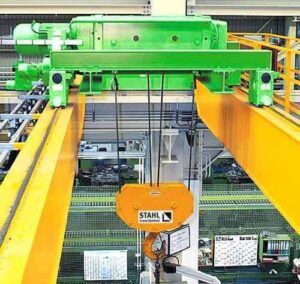
Crane pendant wire rope
The use of crane cable reel power supply should be prevented during the movement of the crane cable was worn, the diameter of not more than 21.5mm crane cable, crane cable drum diameter should be at least 10 times the crane cable diameter; for the diameter of more than 21.5mm crane cable, The crane cable drum diameter should be at least 12.5 times the crane cable diameter.
The crane cable reel shall be capable of automatically winding the crane cable.
The drive torque of the crane cable reel shall be not less than the maximum winding torque required for the winding crane cable. In the process of crane cable laying, the traction force acting on the crane cable conductor should be as small as possible. For crane cables with no reinforcement core, the maximum allowable tension on the copper conductor cross-section is 20N / mm2. For crane cable winding speed or crane cable weight Heavier, should be added to withstand the required traction to strengthen the wire rope for the core.
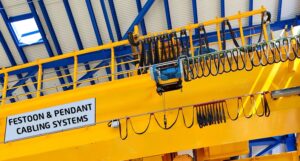
what type of wire rope is used on cranes?
Steel wires for wire ropes are normally made of non-alloy carbon steel with a carbon content of 0.4 to 0.95%. The very high strength of the rope wires enables wire ropes to support large tensile forces and to run over sheaves with relatively small diameters.
Cable construction is the combination and arrangement of wires in a rope. Many individual steel wires are helically-laid together to form a wire rope. A strand is when two or more wires are wound concentrically in a helix. These strands are typically wound around a center wire and then around the core.
The term cable is often used interchangeably with wire rope. However, in general, wire rope refers to diameters larger than 3/8 inch. Sizes smaller than this are designated as cable or cords. Two or more wires concentrically laid around a center wire is called a strand.
The most read

Overhead Cranes
- What are the parts of an overhead crane?
- What is the purpose of an overhead crane?
- How much does an overhead crane cost?
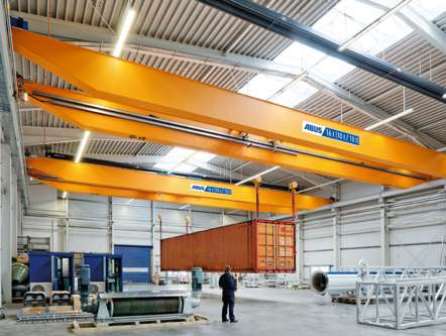
Overhead Crane Test Questions and Answers
- Crane operator interview questions and answers
- Rigging test questions and answers

Overhead crane manufacturers in the USA
Some have wondered if in the United States they fix, manufacture, elaborate parts, and components of overhead cranes.
